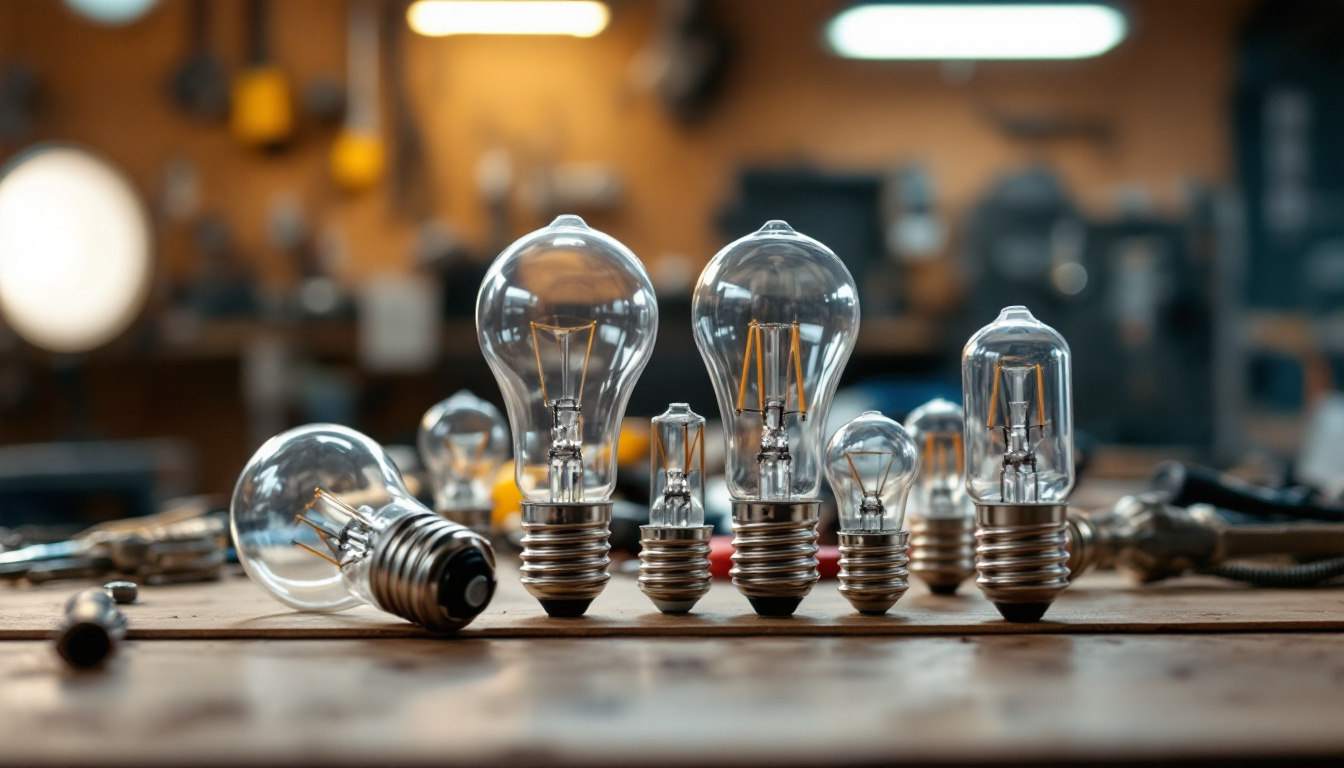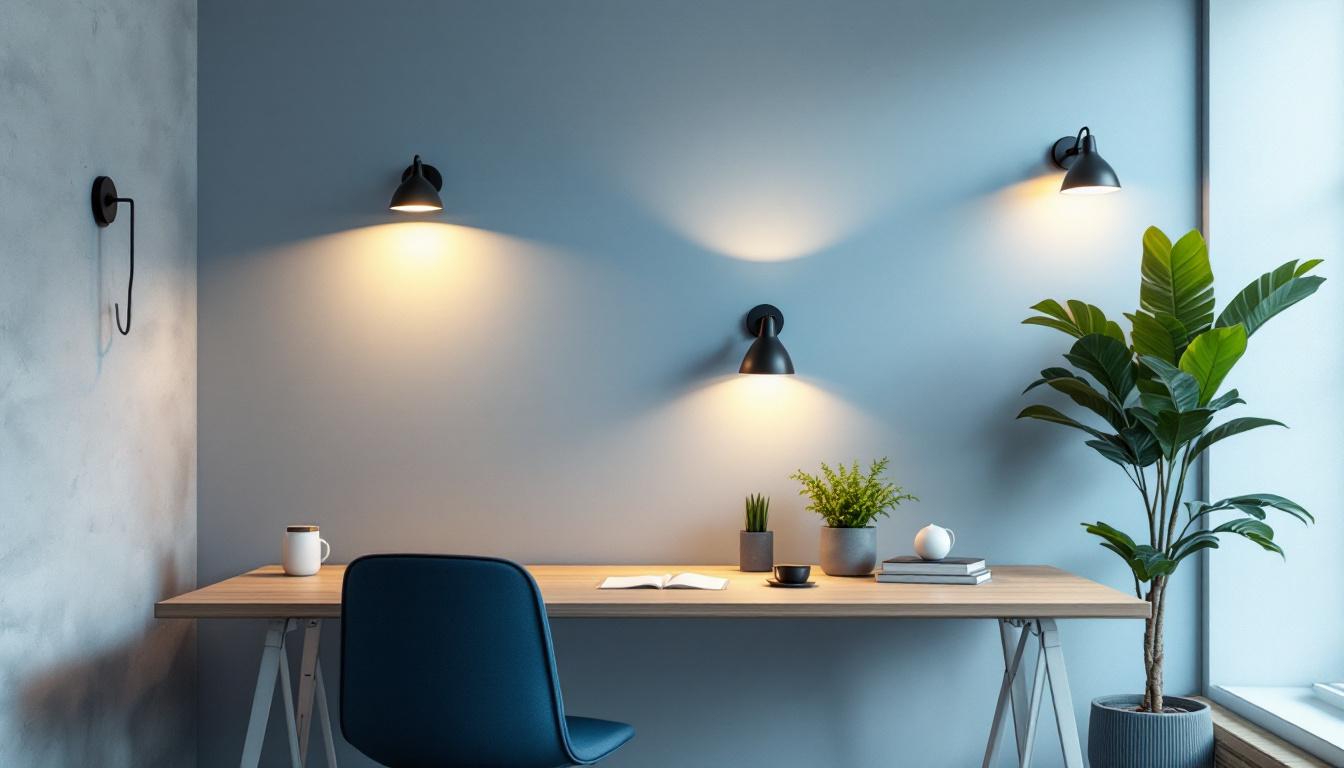
In the ever-evolving world of lighting technology, wafer lighting has emerged as a significant innovation that lighting contractors need to understand. This article delves into the science behind wafer lighting, its applications, and the advantages it offers over traditional lighting solutions. By gaining insight into this technology, contractors can better serve their clients and stay ahead in a competitive market.
Wafer lighting refers to a type of LED lighting that utilizes a thin, flat design resembling a wafer, hence the name. This design allows for a sleek, modern aesthetic that can be seamlessly integrated into various architectural styles. Wafer lights are typically recessed fixtures, making them ideal for installations where space is limited or where a minimalist look is desired. Their unobtrusive nature means they can blend into ceilings, providing a clean and uncluttered appearance that enhances the overall design of a room.
These lighting fixtures are not only about aesthetics; they also offer significant energy efficiency and longevity compared to traditional incandescent or fluorescent lights. With advancements in LED technology, wafer lights can produce high-quality illumination while consuming less power, making them an attractive option for both residential and commercial applications. In fact, many models boast lifespans of up to 50,000 hours, which translates to years of maintenance-free operation, reducing both replacement costs and environmental impact.
Wafer lights come with several key features that enhance their functionality and appeal. First and foremost is their slim profile, which allows them to fit into tight spaces without compromising on light output. This makes them particularly useful in areas like ceilings with limited depth or in installations where a low-profile design is preferred. Additionally, their lightweight construction makes them easy to handle and install, streamlining the installation process for contractors and DIY enthusiasts alike.
Another notable feature is their versatility. Wafer lights are available in various color temperatures and lumen outputs, allowing contractors to choose the right fixture for specific applications. Whether it’s warm white for residential settings or cooler tones for commercial spaces, wafer lights can cater to diverse lighting needs. Some models even offer adjustable color temperatures, enabling users to switch between warm and cool light depending on the time of day or activity, thus enhancing the functionality of the space.
The science behind wafer lighting is rooted in LED technology. LEDs, or light-emitting diodes, are semiconductor devices that convert electrical energy into light. In wafer lights, these diodes are arranged in a compact format, often mounted on a flat panel. This design not only enhances light distribution but also improves thermal management, which is crucial for maintaining the longevity of the fixture. The efficient heat dissipation prevents overheating, ensuring that the LEDs operate at optimal performance and extend their lifespan significantly.
Furthermore, wafer lights often incorporate advanced optics to optimize light output. This includes lenses or reflectors that help direct the light where it’s needed most, reducing glare and improving overall illumination quality. Understanding these technical aspects allows contractors to effectively communicate the benefits of wafer lighting to their clients. Additionally, many wafer lights are designed with dimmable features, providing users with greater control over their lighting environment and allowing for energy savings when full brightness is not necessary. This adaptability makes wafer lighting an ideal choice for various settings, from cozy living spaces to bustling office environments.
Wafer lighting is versatile and can be used in a variety of settings. Its applications range from residential to commercial and even industrial environments. Understanding where and how to implement wafer lights can significantly enhance a contractor’s service offering.
In residential settings, wafer lights are often used in kitchens, living rooms, and hallways. Their low-profile design allows for easy installation in ceilings, providing ambient lighting that complements other light sources. Additionally, they can be used in closets and other small spaces where traditional fixtures may not fit.
Homeowners appreciate the energy efficiency of wafer lights, which can lead to reduced electricity bills. Moreover, the ability to choose different color temperatures allows for customization to suit personal preferences and enhance the overall aesthetic of a home.
In commercial spaces, wafer lighting is increasingly popular due to its sleek design and effective illumination. Retail stores often use wafer lights to highlight products and create an inviting atmosphere. In office environments, these fixtures can provide uniform lighting that reduces eye strain and enhances productivity.
Moreover, wafer lights can be integrated into smart lighting systems, allowing for advanced control options such as dimming and color changing. This adaptability makes them an excellent choice for businesses looking to create dynamic lighting environments.
While wafer lighting is primarily associated with residential and commercial use, it also finds applications in industrial settings. Factories and warehouses can benefit from wafer lights due to their energy efficiency and durability. These fixtures can withstand harsh conditions while providing bright, reliable illumination for workspaces.
Additionally, the low heat output of wafer lights reduces the risk of overheating, making them safer for use in environments where heat can be a concern. This feature is particularly important in manufacturing settings where equipment and materials may be sensitive to temperature changes.
Wafer lighting offers numerous advantages that make it an attractive option for contractors and clients alike. Understanding these benefits can help contractors make informed recommendations to their customers.
One of the most significant advantages of wafer lighting is its energy efficiency. Compared to traditional lighting options, wafer lights consume significantly less power while providing the same or even greater light output. This efficiency translates to lower energy bills for homeowners and businesses, making it a cost-effective choice in the long run.
Furthermore, the long lifespan of LED technology means that wafer lights require less frequent replacement, reducing maintenance costs and waste. This sustainability aspect is increasingly important to clients who are looking to minimize their environmental impact.
The slim design of wafer lights allows for a high degree of flexibility in installation. They can be easily integrated into various architectural styles, from modern to traditional. This adaptability makes them suitable for a wide range of projects, allowing contractors to meet diverse client needs.
Additionally, wafer lights can be used in conjunction with other lighting types, creating layered lighting designs that enhance the overall aesthetic of a space. This versatility is a significant selling point for contractors looking to provide comprehensive lighting solutions.
Wafer lights are designed to provide high-quality illumination that enhances visibility and comfort. With advanced optics and the ability to choose different color temperatures, these fixtures can create the desired ambiance in any setting. Whether it’s a warm, inviting glow for a home or bright, focused light for a workspace, wafer lights can meet the specific lighting requirements of any project.
Moreover, the even distribution of light helps reduce shadows and glare, contributing to a more pleasant environment. This quality is particularly important in commercial and industrial settings where proper lighting can impact productivity and safety.
While wafer lighting offers many advantages, there are also challenges and considerations that contractors should be aware of. Understanding these factors can help ensure successful installations and satisfied clients.
Wafer lights typically require specific installation techniques to ensure optimal performance. Contractors must be familiar with the necessary electrical requirements and mounting methods to avoid issues during installation. Properly assessing the ceiling space and ensuring adequate support for the fixtures is crucial for a successful installation.
Additionally, some wafer lights may require compatible dimmers or control systems to function correctly. Contractors should educate themselves on these requirements to provide accurate recommendations to clients and avoid potential complications.
While wafer lights can lead to long-term savings through energy efficiency, the initial investment may be higher than traditional lighting options. Contractors should be prepared to discuss the cost-benefit analysis with clients, highlighting the potential savings over time and the durability of the fixtures.
Moreover, educating clients about the long lifespan of wafer lights can help justify the upfront costs. Providing a clear understanding of the return on investment can help clients make informed decisions about their lighting choices.
When integrating wafer lights into existing lighting systems, compatibility can be a concern. Contractors must assess whether the new fixtures can work seamlessly with current wiring and control systems. This evaluation is essential to avoid issues that could arise from mismatched technologies.
Additionally, contractors should be prepared to offer solutions for clients who may need to upgrade their systems to accommodate wafer lighting. This proactive approach can enhance client satisfaction and ensure successful project outcomes.
Wafer lighting represents a significant advancement in lighting technology, offering numerous benefits for both contractors and clients. Its energy efficiency, design flexibility, and improved light quality make it an attractive option for a wide range of applications. By understanding the science behind wafer lighting and its practical applications, contractors can better serve their clients and enhance their service offerings.
As the demand for modern, efficient lighting solutions continues to grow, staying informed about innovations like wafer lighting will be crucial for contractors looking to remain competitive in the industry. Embracing this technology not only benefits contractors but also leads to satisfied clients who appreciate the value of high-quality lighting solutions.
Ready to elevate your lighting projects with the advanced technology of wafer lighting? At LumenWholesale, we provide lighting contractors with the highest quality, spec-grade wafer lights at unbeatable wholesale prices. Say goodbye to local distributor markups and hello to superior lighting solutions that fit your budget. With our commitment to quality, affordability, and convenience, you’ll enjoy hassle-free bulk purchases, free shipping, and the satisfaction of delivering top-notch lighting to your clients. Don’t compromise on quality or cost—choose LumenWholesale for Wholesale Lighting at the Best Value.

Discover essential best practices for lighting contractors with our comprehensive guide on light bulb standard bases.

Discover expert tips in our Wall Lights Office guide to choose the right lighting contractors.

Discover how the Solar Powered Sign Light 2 Pack is revolutionizing the lighting industry for contractors.

Discover essential insights for lighting contractors in our comprehensive guide on outdoor lamps.